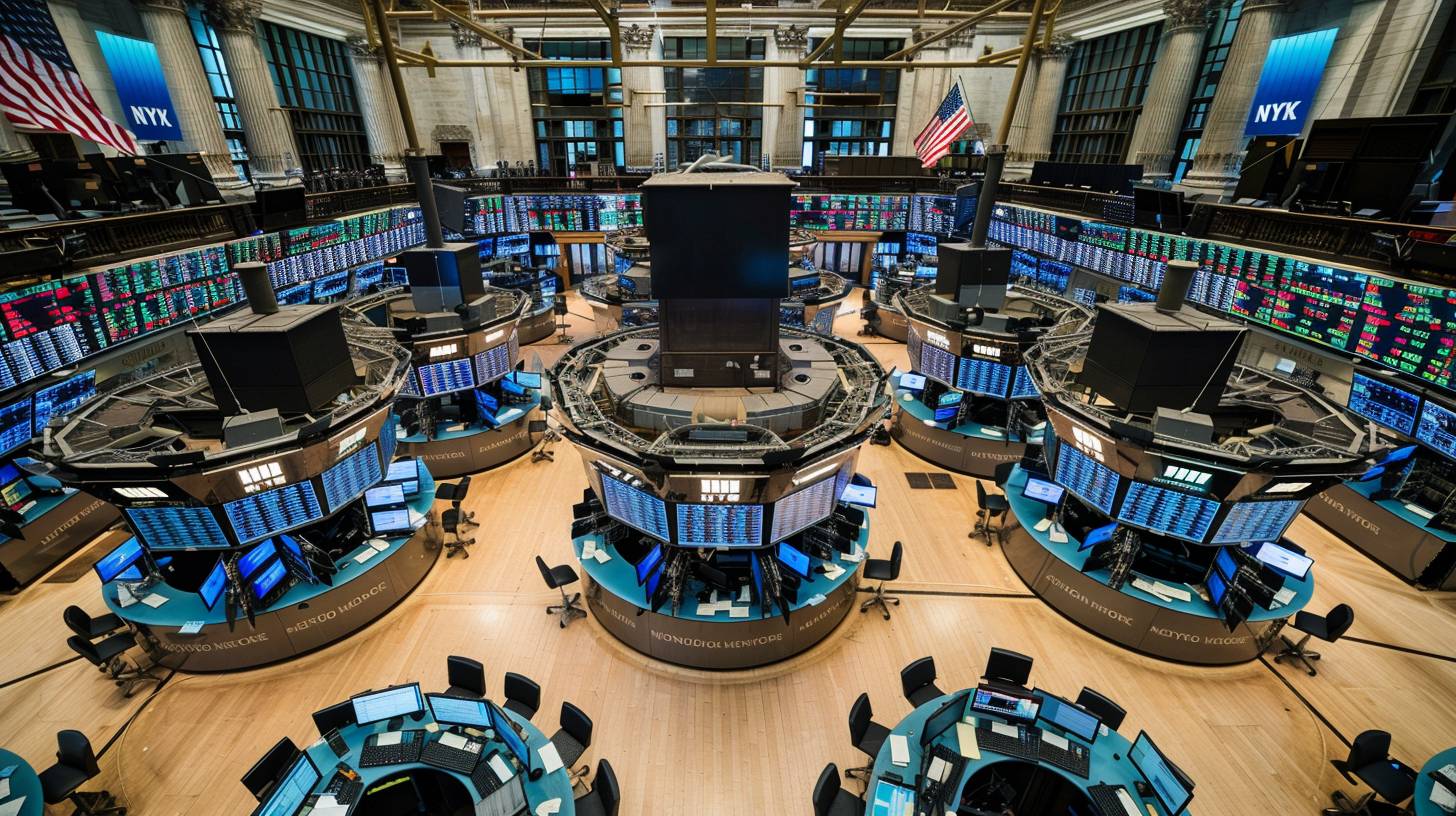What are Options?

What Is an Option?
An option is a financial instrument derived from the value of underlying assets like stocks, indexes, and exchange-traded funds (ETFs). An options contract gives the buyer the right, but not the obligation, to buy or sell the underlying asset, depending on the type of contract. Unlike futures contracts, the holder is not required to execute the buy or sell if they choose not to.
Each options contract has a specific expiration date by which the holder must exercise their option. The price specified in the contract is known as the strike price. Options are usually traded through online or retail brokers.
Understanding Options
Options are versatile financial instruments involving a contract between a buyer and a seller, where the buyer pays a premium for the rights specified in the contract. Call options grant the holder the right to buy the asset at a predetermined price within a set period, while put options allow the holder to sell the asset at a predetermined price within a specific timeframe. Each call option involves a bullish buyer and a bearish seller, whereas put options involve a bearish buyer and a bullish seller.
Traders and investors engage in options trading for various reasons. Speculating with options enables traders to hold leveraged positions in assets at a lower cost compared to purchasing shares outright. Investors use options to hedge or mitigate the risk in their portfolios.
Additionally, option holders can generate income by buying call options or becoming options writers. Options provide a direct method to invest in commodities like oil. For options traders, monitoring an option's daily trading volume and open interest is crucial for making informed investment decisions.
American options can be exercised at any time before their expiration date, while European options can only be exercised on the expiration date. Exercising an option means using the right to buy or sell the underlying security.
Types of Options
Calls
A call option grants the holder the right, but not the obligation, to purchase the underlying security at the strike price on or before its expiration. The value of a call option increases as the price of the underlying security rises (calls have a positive delta).
A long call is used to speculate on the price increase of the underlying asset, offering unlimited upside potential with the maximum loss limited to the premium paid for the option.
Puts
In contrast, a put option gives the holder the right, but not the obligation, to sell the underlying stock at the strike price on or before expiration. A long put represents a short position in the underlying security, gaining value as the price of the underlying asset falls (puts have a negative delta). Protective puts can be bought as insurance, providing a price floor to hedge investors' positions.
American vs. European Options
American options can be exercised at any time from the purchase date until the expiration date. In contrast, European options can only be exercised at the end of their term, on the expiration date.
The difference between American and European options is related to the exercise timing, not geography. Many stock index options are European. Since the ability to exercise early adds value, American options generally have a higher premium than their European counterparts. The early exercise feature is desirable and therefore commands a premium.
Special Considerations
Options contracts typically represent 100 shares of the underlying security, and the buyer pays a premium for each contract. For instance, if an option has a premium of 35 cents per contract, purchasing one option would cost $35 ($0.35 x 100 = $35). This premium is partly determined by the strike price, which is the price at which the security can be bought or sold until the expiration date.
The expiration date is another factor influencing the premium price. Similar to an expiration date on perishable goods, it indicates when the option contract must be exercised. The timing depends on the underlying asset, with some options expiring daily, weekly, monthly, or even quarterly. For monthly contracts, the expiration typically occurs on the third Friday of the month.
Options Spreads
Options spreads involve strategies that combine buying and selling different options to achieve a specific risk-return profile. These spreads use standard options to capitalize on various market conditions, such as high or low volatility, upward or downward movements, or stable environments.
Spread strategies can be identified by their payoff structures or visual profit-loss profiles, with common examples including bull call spreads and iron condors.
Options Risk Metrics: The Greeks
In the options market, "the Greeks" refer to the various dimensions of risk involved in holding an options position, whether for a single option or an entire portfolio. These risk metrics are named after Greek symbols.
Each Greek represents a different risk factor arising from an imperfect assumption or the option's relationship with another underlying variable. Traders use these Greek values to evaluate options risk and manage their option portfolios effectively.
Delta
Delta (Δ) measures the rate of change in the option's price in relation to a $1 change in the price of the underlying asset, indicating the option's price sensitivity to the underlying asset. Call options have a delta range from zero to one, while put options range from zero to negative one. For instance, if an investor holds a call option with a delta of 0.50, a $1 increase in the underlying stock would theoretically raise the option's price by 50 cents.
Delta also indicates the hedge ratio for creating a delta-neutral position. For example, purchasing a standard American call option with a 0.40 delta requires selling 40 shares of the stock to achieve a fully hedged position. The net delta of an options portfolio can determine the overall hedge ratio.
Additionally, delta can be interpreted as the probability that the option will expire in-the-money. For example, a call option with a 0.40 delta implies a 40% chance of expiring in-the-money.
Theta
Theta (Θ) measures the rate of change in the option's price relative to the passage of time, often referred to as an option's time decay. It indicates how much an option's price will decrease as the expiration date approaches, assuming all other factors remain constant. For example, if an investor holds an option with a theta of -0.50, the option's price would decrease by 50 cents for each passing day. Over three trading days, the option's value would theoretically drop by $1.50.
Theta is higher for at-the-money options and decreases for in-the-money and out-of-the-money options. Additionally, options nearing expiration experience faster time decay.
According to The Options Industry Council, long calls and long puts generally have negative theta, while short calls and short puts have positive theta. In contrast, assets not affected by time, like stocks, have zero theta.
Gamma
Gamma (Γ) measures the rate of change between an option's delta and the price of the underlying asset, indicating second-order price sensitivity. Gamma shows how much the delta will change with a $1 move in the underlying security. For example, if an investor holds a call option on a hypothetical stock XYZ with a delta of 0.50 and a gamma of 0.10, a $1 increase or decrease in XYZ's price would change the call option's delta by 0.10.
Gamma helps assess the stability of an option's delta. High gamma values mean delta can change significantly even with small price movements in the underlying asset. Gamma is highest for at-the-money options and lower for in-the-money and out-of-the-money options, increasing as expiration approaches.
Gamma values are generally smaller for options with longer expirations, making them less sensitive to delta changes. As expiration nears, gamma values rise, making price changes more impactful.
Options traders may hedge both delta and gamma to maintain a delta-gamma neutral position, ensuring that delta remains close to zero as the underlying asset's price fluctuates.
Vega
Vega (V) measures the rate of change between an option's value and the implied volatility of the underlying asset, indicating the option's sensitivity to volatility. Vega shows how much an option's price will change with a 1% change in implied volatility. For instance, if an option has a Vega of 0.10, its value is expected to change by 10 cents with a 1% change in implied volatility.
Increased volatility suggests that the underlying asset is more likely to reach extreme values, thus increasing the option's value. Conversely, decreased volatility reduces the option's value. Vega is highest for at-the-money options with longer times until expiration.
Interestingly, the Greek language does not have a letter named vega, and there are various theories about how this symbol, resembling the Greek letter nu, became part of stock-trading terminology.
Rho
Rho (ρ) measures the rate of change in an option's value with a 1% change in interest rates, indicating the option's sensitivity to interest rate fluctuations. For example, if a call option has a rho of 0.05 and a price of $1.25, a 1% increase in interest rates would raise the call option's value to $1.30, assuming all other factors remain constant. Conversely, the value of put options decreases with rising interest rates. Rho is most significant for at-the-money options with long times until expiration.
Minor Greeks
Several lesser-known Greeks, such as lambda, epsilon, vomma, vera, speed, zomma, color, and ultima, are also used in options trading. These Greeks are second- or third-derivatives of the pricing model and influence factors like the change in delta with variations in volatility. With the advent of advanced computer software, these complex and sometimes obscure risk factors are increasingly incorporated into options trading strategies.
Advantages and Disadvantages of Options: Buying Call Options
Call options give the holder the right, but not the obligation, to purchase an underlying security at the specified strike price by the expiration date. The buyer's risk is limited to the premium paid for the option, with no impact from fluctuations in the underlying stock.
Buyers are typically bullish on a stock, expecting its price to rise above the strike price before the option expires. If this happens, the investor can exercise the option, buy the stock at the strike price, and sell it at the current market price for a profit.
The profit is calculated as the market price minus the strike price, minus the option's premium and any brokerage fees, multiplied by the number of contracts purchased, and then by 100 (since each contract typically represents 100 shares).
If the stock price does not exceed the strike price by the expiration date, the option expires worthless. The holder is not obligated to purchase the shares but will lose the premium paid for the call option.
Selling Call Options
Selling call options, known as writing a contract, involves the writer receiving the premium fee paid by the buyer. The maximum profit for the writer is the premium received. A writer of a call option is bearish, believing the underlying stock's price will decline or remain close to the strike price during the option's life.
If the market price is at or below the strike price at expiration, the option expires worthless for the buyer, and the seller keeps the premium as profit. The buyer won't exercise the option because buying the stock at the strike price would be more expensive than buying it at the market price.
However, if the market price exceeds the strike price at expiration, the seller must sell the shares to the buyer at the lower strike price. This means the seller must either use their portfolio holdings or buy the stock at the current market price to fulfill the contract, incurring a loss. The extent of the loss depends on the cost basis of the shares used to cover the order, plus any brokerage fees, minus the premium received.
As illustrated, the risk for call writers is much greater than for call buyers. The buyer's loss is limited to the premium paid, while the writer faces potentially unlimited risk if the stock price continues to rise.
Buying Put Options
Put options are investments where the buyer anticipates that the underlying stock's market price will fall below the strike price by the expiration date. The holder has the right, but not the obligation, to sell shares at the strike price by the specified date.
Buyers of put options profit when the stock price decreases below the strike price. If the market price is less than the strike price at expiration, the investor can exercise the put option and sell shares at the higher strike price. If they wish to retain their shares, they can buy them back on the open market.
The profit is calculated as the strike price minus the current market price, minus expenses such as the premium and any brokerage fees. This result is then multiplied by the number of option contracts purchased, and then by 100, assuming each contract represents 100 shares.
The value of a put option increases as the underlying stock price decreases and declines as the stock price increases. The risk of buying put options is limited to the premium paid if the option expires worthless.
Selling Put Options
Selling put options, also known as writing a contract, involves the writer expecting the underlying stock's price to remain stable or increase, making them bullish on the stock. The buyer of the put option has the right to compel the seller to buy shares of the underlying asset at the strike price upon expiration.
If the stock's price closes above the strike price by the expiration date, the put option expires worthless, and the writer's maximum profit is the premium received. The buyer won't exercise the option because selling the stock at the lower strike price is unfavorable compared to the higher market price.
However, if the stock's market price falls below the strike price, the writer must buy the shares at the strike price. The option buyer will exercise their right to sell at the higher strike price since it is above the market value.
The risk for the put option writer arises when the market price drops below the strike price. The writer must purchase shares at the higher strike price, which can result in significant losses depending on how much the stock has depreciated.
The writer can either hold onto the shares, hoping the price rebounds above the purchase price, or sell the shares and realize the loss. Any losses are partially offset by the premium received.
Some investors write put options at a strike price they find attractive, willing to buy the shares at that price. If the stock price falls and the option is exercised, they acquire the stock at the desired price and also benefit from receiving the option premium.
Example of an Option
Let's say Microsoft (MSFT) shares are trading at $108 each, and you believe their value will rise. To benefit from this potential increase, you purchase a call option with a strike price of $115, expiring in one month, for 37 cents per contract. Your total cost is $37 plus fees and commissions (0.37 x 100 = $37).
If the stock price rises to $116, your option will be worth $1, as you could exercise the option to buy the stock at $115 per share and sell it at $116 per share. The profit from the option position would be 170.3% since you paid 37 cents and earned $1. This is much higher than the 7.4% increase in the stock price from $108 to $116 by the expiration date.
In dollar terms, the profit would be 63 cents per share or $63 in total, as one option contract represents 100 shares [($1 - 0.37) x 100 = $63].
If the stock price fell to $100, your option would expire worthless, and you would lose the $37 premium. However, this loss is limited compared to buying 100 shares at $108, which would have resulted in an $800 total loss ($8 per share). This example illustrates how options can limit downside risk.
The Bottom Line
Options are a type of derivative that enable investors to speculate on or hedge against the volatility of an underlying stock. There are two main types: call options, which allow buyers to profit from an increase in the stock price, and put options, where buyers profit from a decrease in the stock price. Investors can also sell options to others, known as shorting. Selling a call option means profiting if the stock's price declines, while selling a put option means profiting if the stock's price increases.


 Русский
Русский  Español
Español  Deutsch
Deutsch  Indonesian
Indonesian  Português
Português  Français
Français  Nederlands
Nederlands  Italiano
Italiano  中文
中文  عربي
عربي  Türkçe
Türkçe 

